Cleveland is known as the “rock and Roll Capitol of the World” because it’s home to the Rock and Roll Hall of Fame, which was originally on my list of must-see places. I loved Nashville’s Country Music Hall of Fame (more info
) but the more on-line reviews I read on the Rock and Roll Hall of Fame, the less desirable it became. What else was there to do in the most populated city on Lake Erie? With nearly 400,000 people, this city, like most its size, has an art museum or two, a zoo, a botanical garden and some professional team stadiums, but we were looking for something unique to the area and found it!
Cleveland might not top your travel list, but if you’re in the area we found the perfect blend of history, pop culture, and natural beauty in the area.
LAKE VIEW CEMETERY
Our day began at the Lake View Cemetery. With its stunning combination of art, architecture and history, this was a surprising find! This 285-acre garden cemetery, established in 1869, rivals the great cemeteries of Europe with its ornate monuments and peaceful grounds. It doesn’t have the same gothic feel as Bonaventure Cemetery in Savannah (more info linked here), but it was still very nice.
The crown jewel of the cemetery is the James A. Garfield Memorial, a massive structure honoring our 20th president. Standing 180 feet tall, this architectural marvel offers panoramic views of Cleveland and Lake Erie from its outdoor balcony. Completed in 1890 at a cost of over $225K (approximately $6.5M today), inside this stone structure are relief panels that depict major events in Garfield’s life and a life sized statue of the president. The mosaic ceiling in the rotunda has 13 life-sized female figures that represent the 13 colonies. They were created with over 10 million pieces of marble and glass. The bronze casket of President Garfield and his wife are located in the lower level crypt. This memorial reflects the Gilded Age’s architectural grandeur and the nation’s deep mourning for Garfield, who was assassinated just months into his presidency.
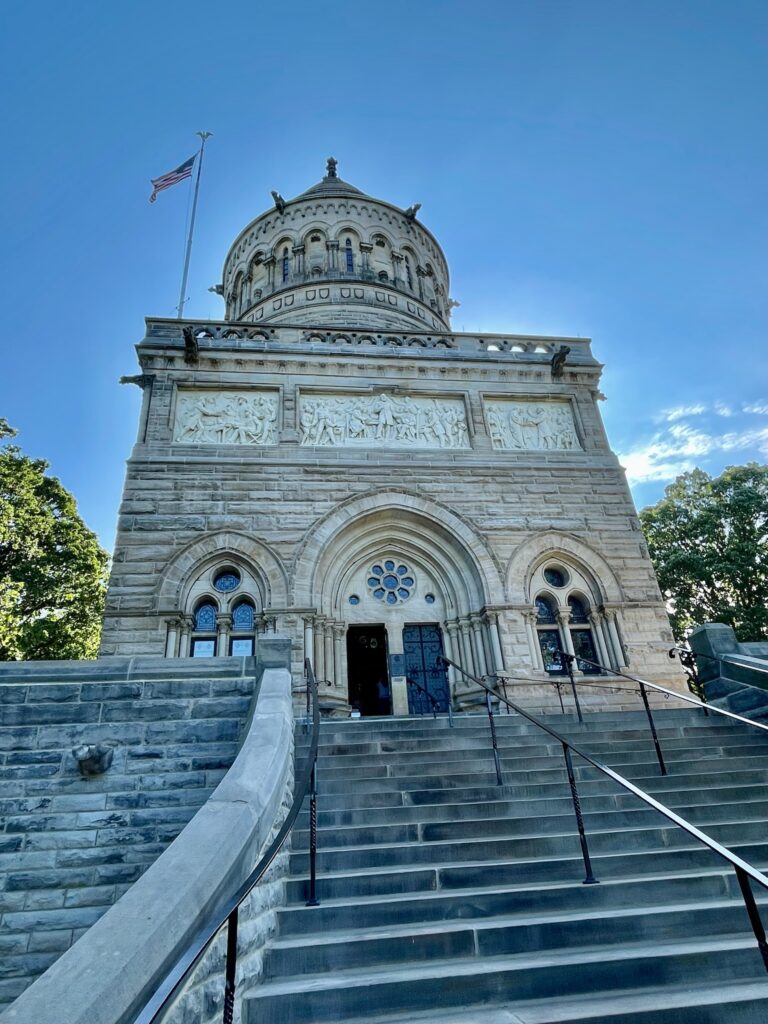
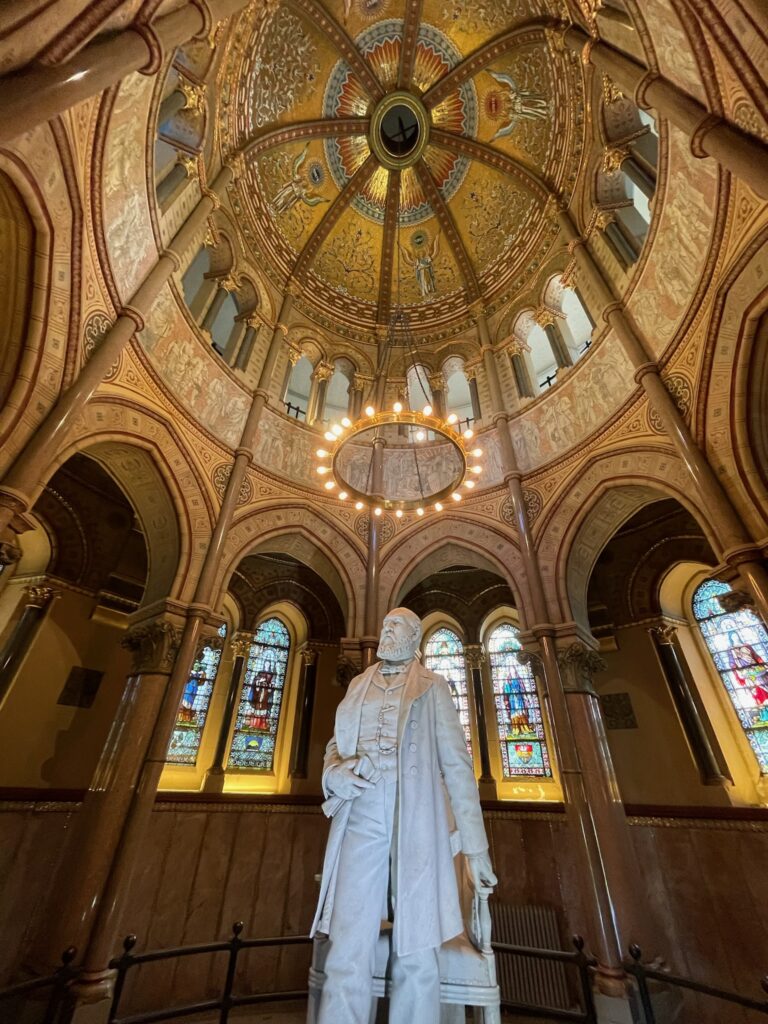
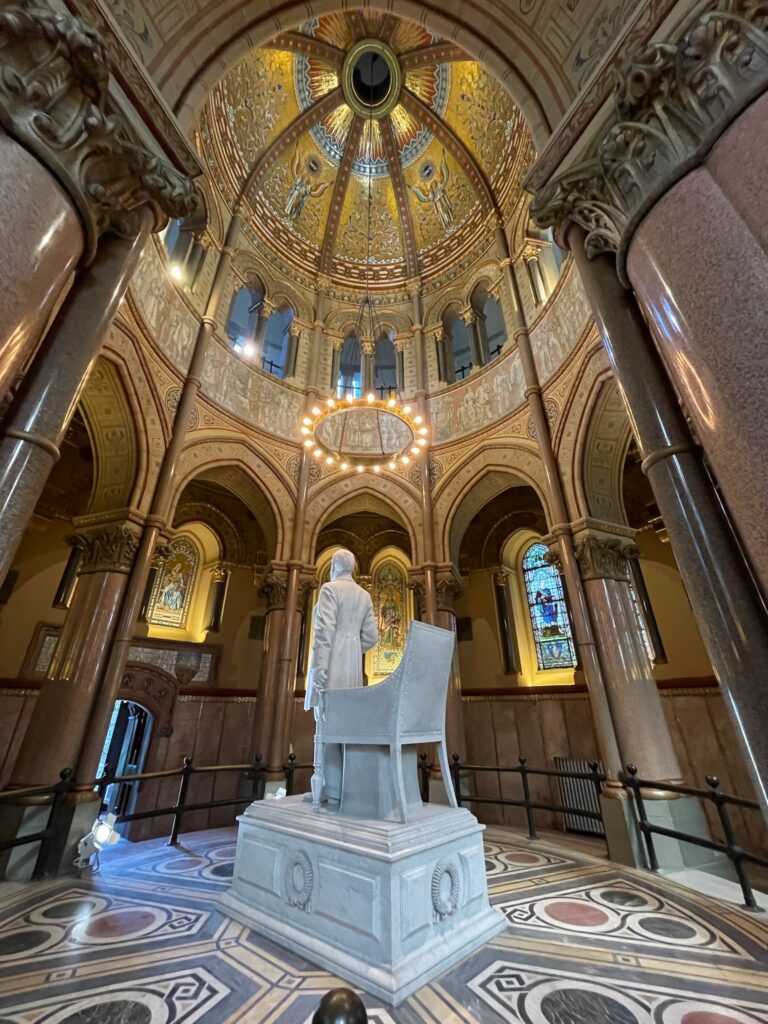
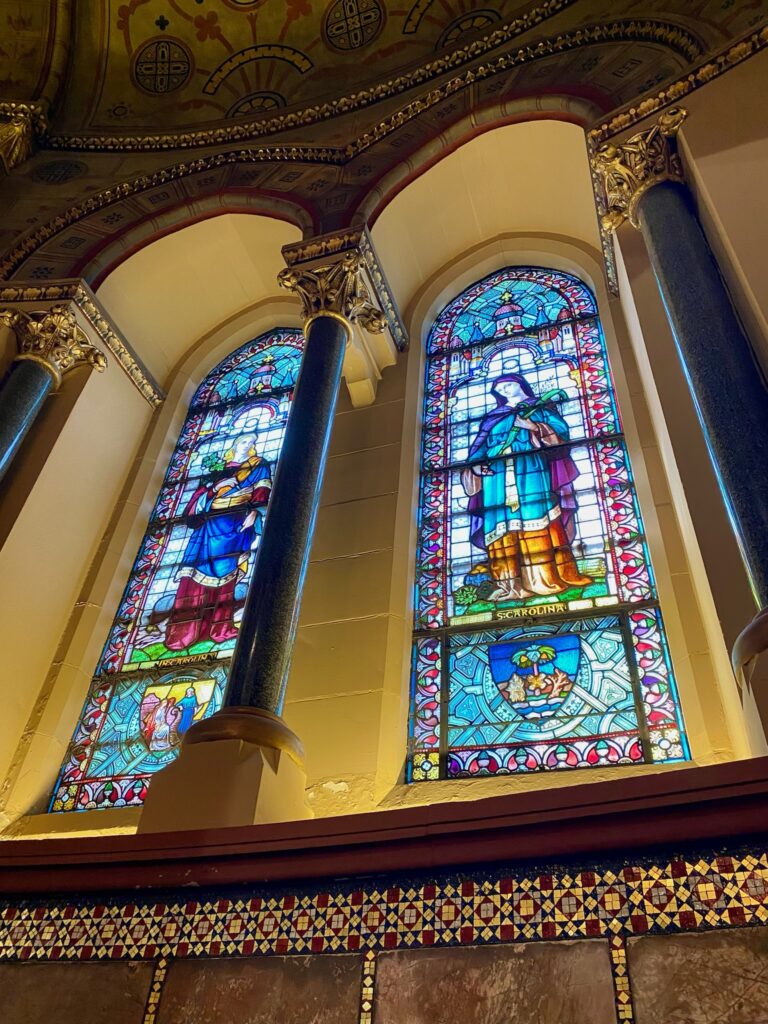
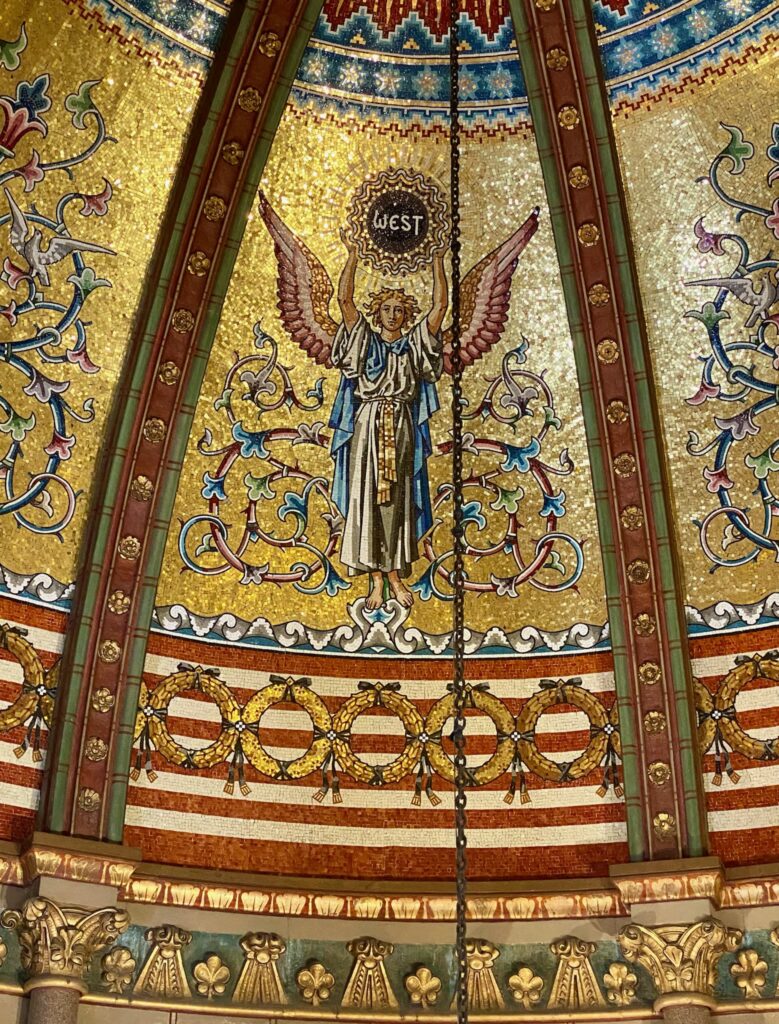
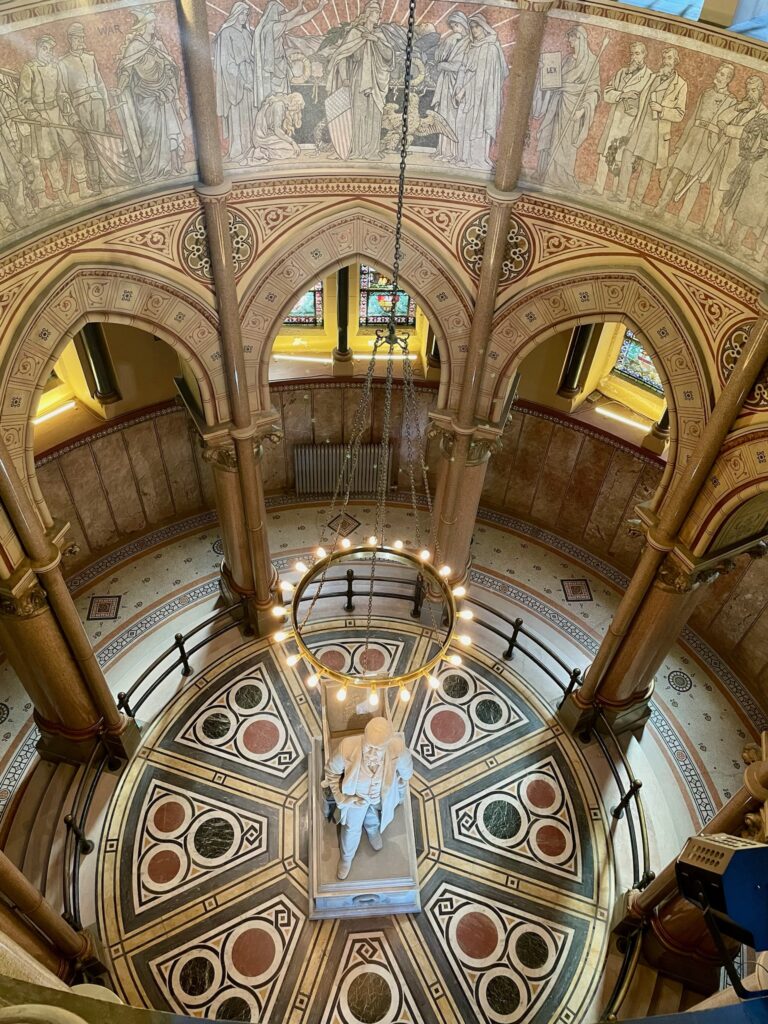
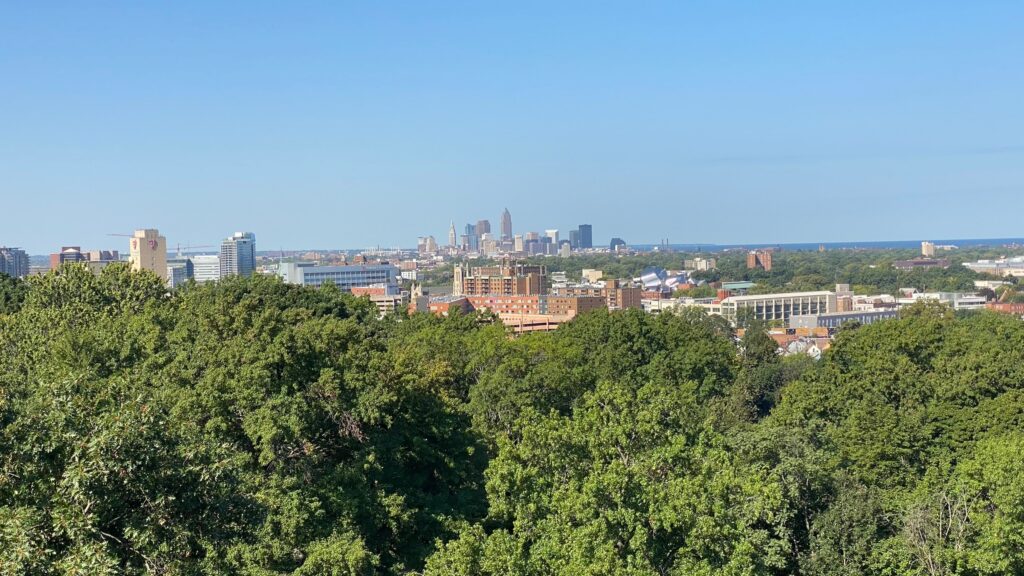
As if the Garfield Memorial were not enough, maybe the most breathtaking feature in the cemetery is Wade Memorial Chapel.
Jeptha Homer Wade was a founder of Western Union Telegraph and later of Lake View Cemetery. He was instrumental in establishing Cleveland’s cultural institutions, including the Cleveland Institute of Art. When he passed, his son chose Louis Comfort Tiffany Studios to design a chapel for the cemetery in memory of his father. Tiffany was considered a premier decorative artist of America’s Gilded Age. This chapel, completed in 1901, cost $369,000 (about 7 million today), making it one of the most expensive and elaborate cemetery chapels of its era!
Unlike many projects where Tiffany only provided windows or individual elements, the chapel is one of the few buildings completely designed by Tiffany, including stained glass windows, mosaic walls and floors, light fixtures, interior furnishings, color scheme and all architectural details.
The central stained glass window of Christ’s resurrection is stunning and remarkable in its layered glass construction that creates depth, dimension, different textures and opacities. Some of the glass shifts colors depending on the light angle.
The wall mosaics depict a spiritual journey – one side of the boat earthly life is represented and the other, eternal life. You sit in the pews in the middle of the “boat”.
This small chapel is one of the prettiest we’ve seen in the U.S.
Other notable residents of Lake View Cemetery include John D. Rockefeller (the oil tycoon and America’s first billionaire), Eliot Ness (the lawman who brought down Al Capone), Alan Freed (a DJ who coined the term “rock and roll”) and Carl B. Stokes (Clevelands first African American mayor).


.
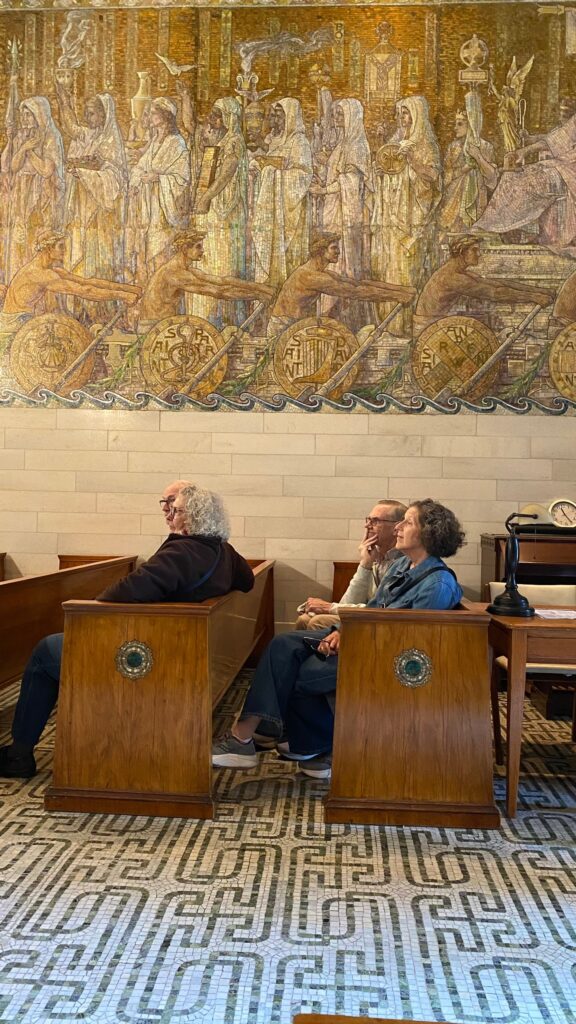
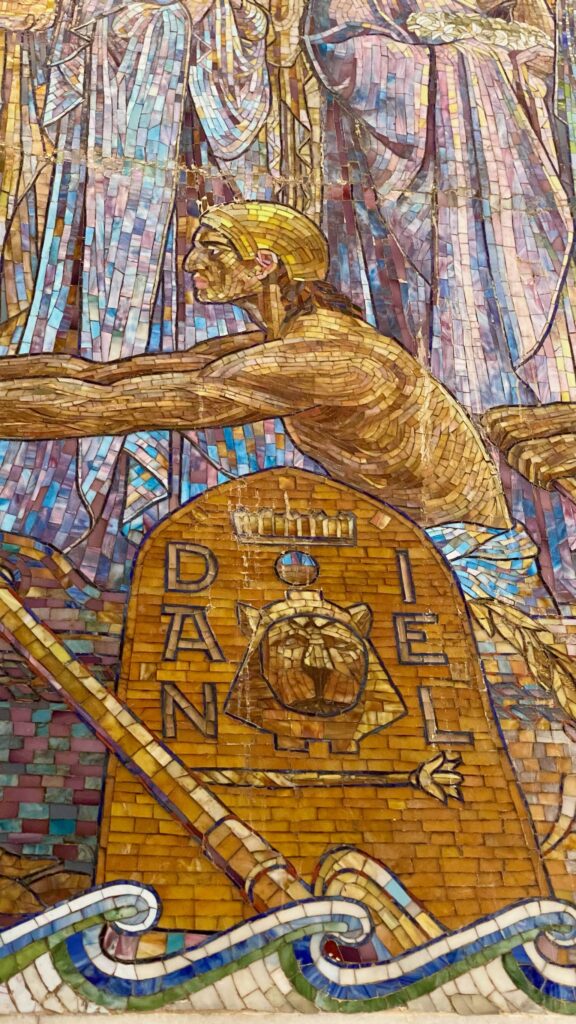
.
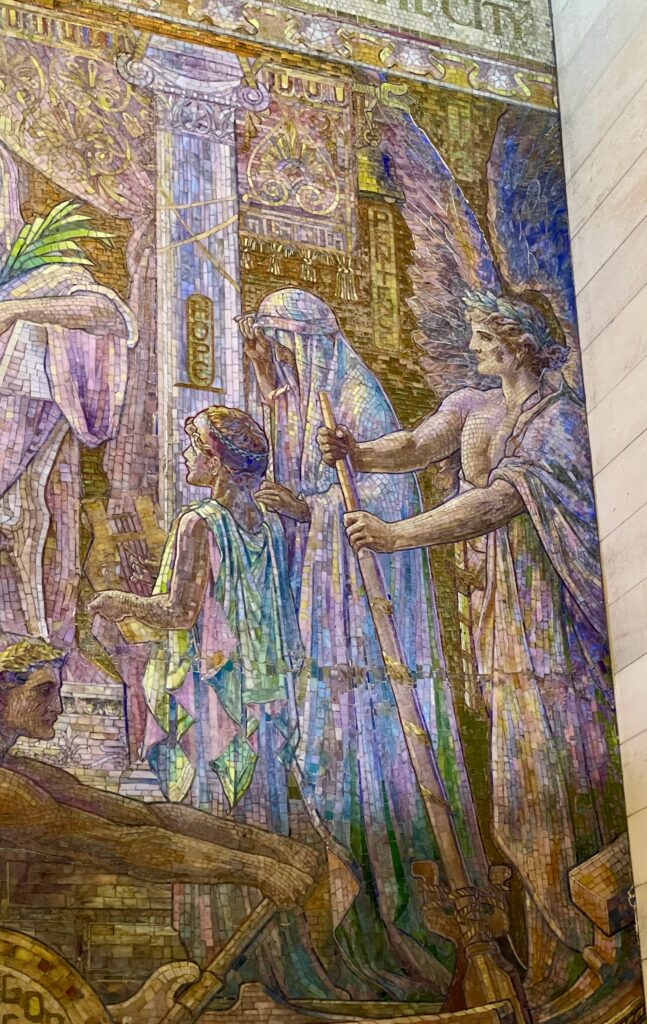

.
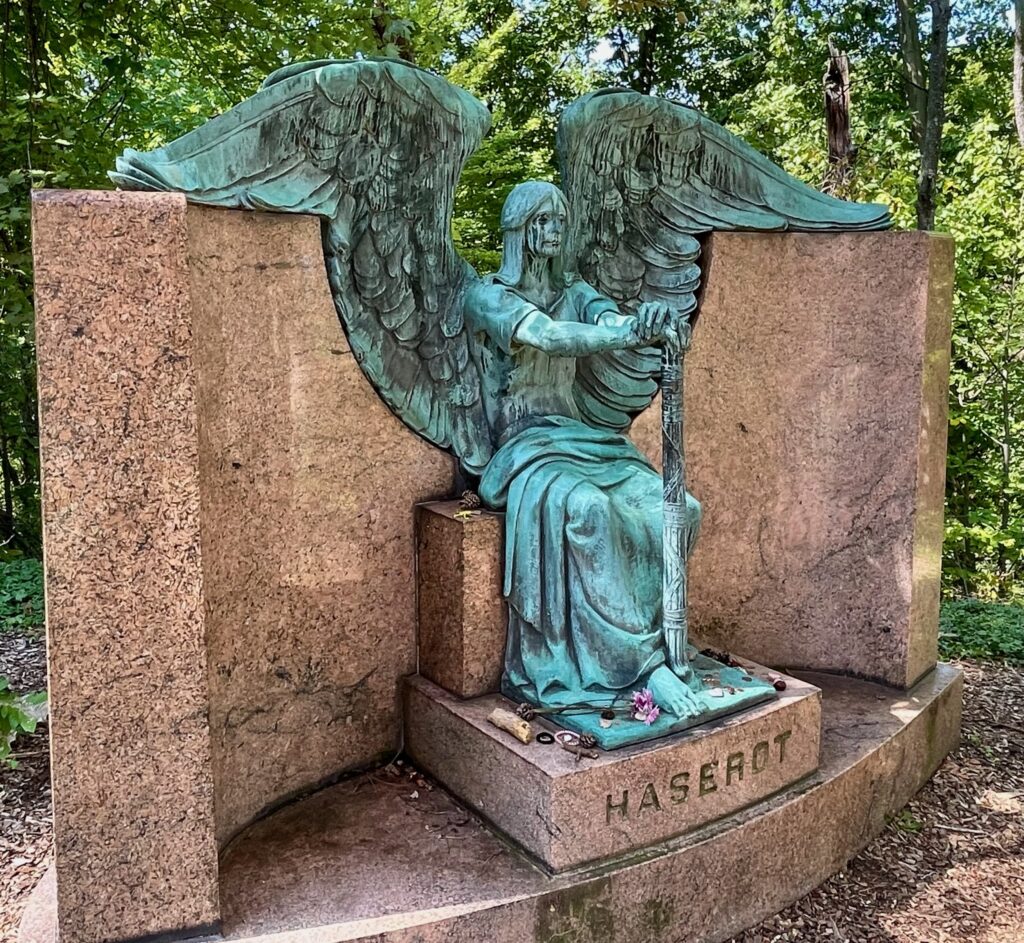
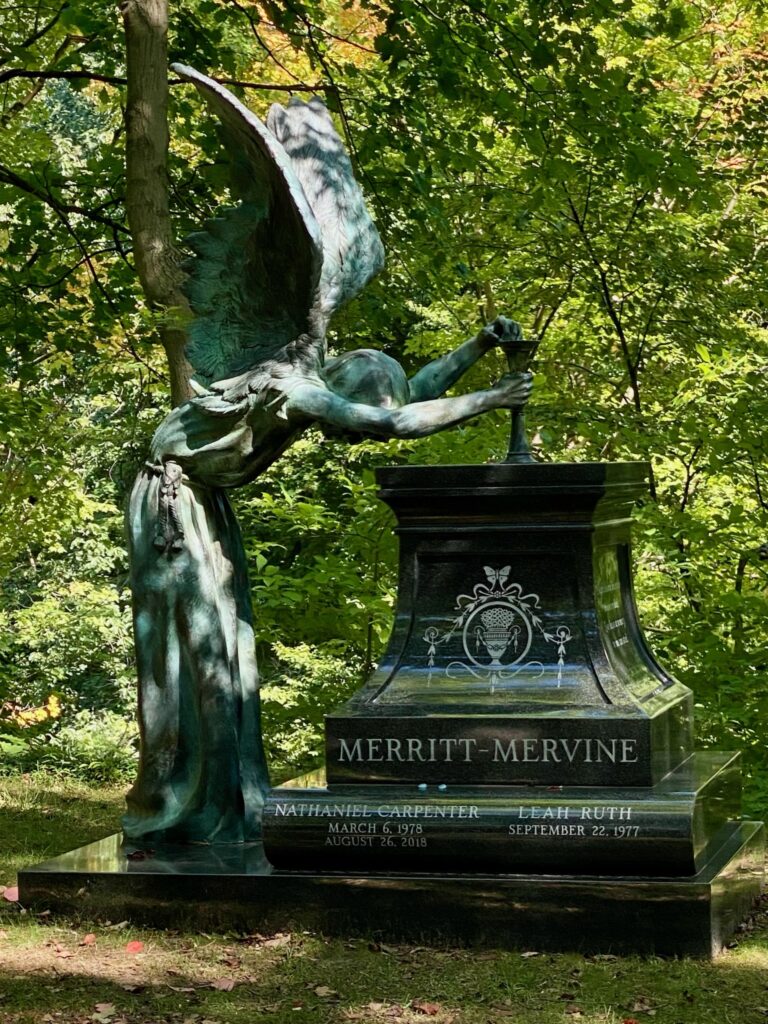
A CHRISTMAS STORY HOUSE
From the solemnity of Lake View Cemetery, we shifted gears to visit a piece of pop culture history – the house used in “A Christmas Story”. Located on an unremarkable street in Cleveland’s Tremont neighborhood, the restored yellow house with its iconic leg lamp in the window transported us straight into Ralphie Parker’s world.
We did not take the tour, but there was a line up for those who planned to do so!
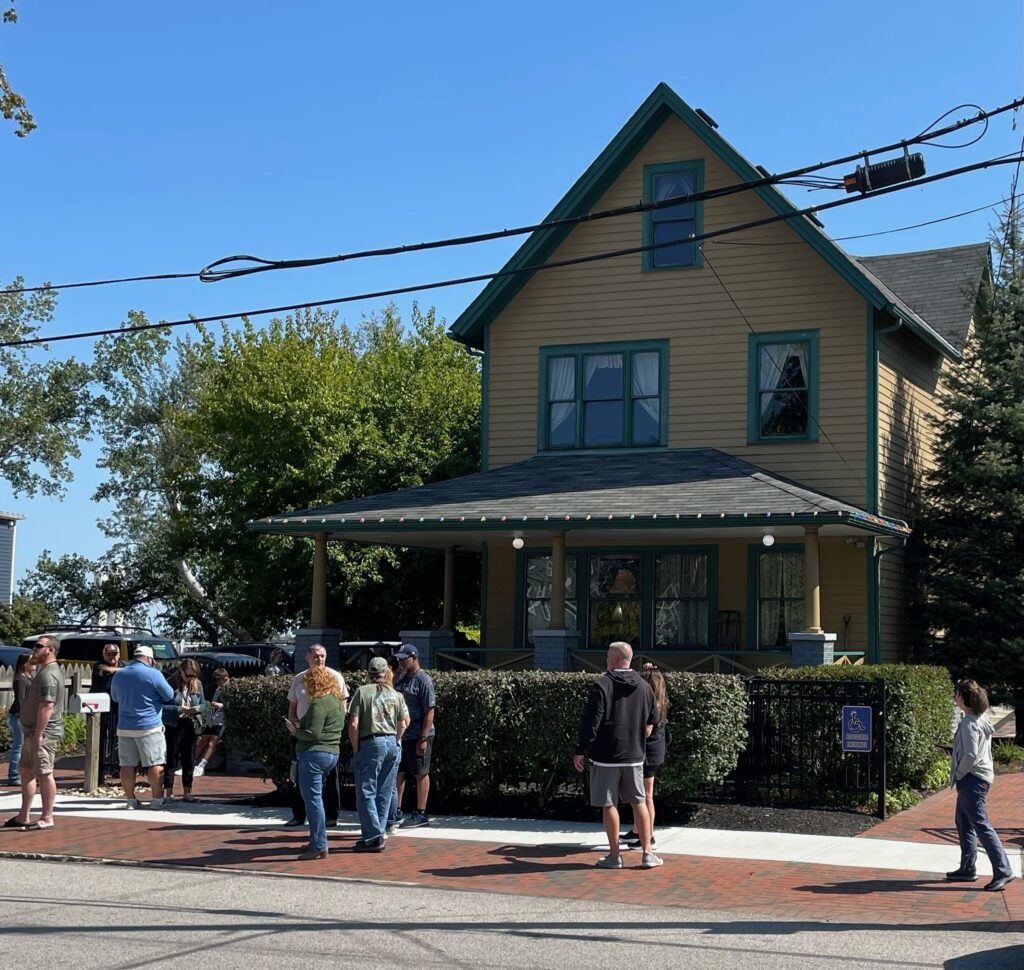
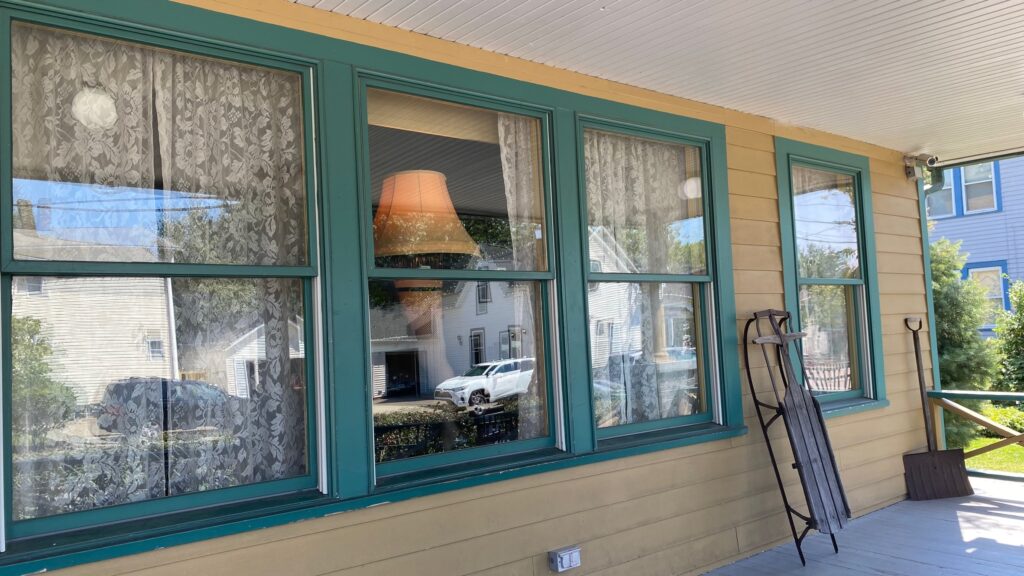
THE OHIO & ERIE CANAL TOWPATH
After leaving the city, our afternoon took an active turn as we hopped on our bikes to explore a portion of the Ohio & Erie Canal Towpath Trail. This historic pathway once stretched across the state, connecting Lake Erie to the Ohio River. This particular section through the heart of Cuyahoga Valley National Park has locks and well trodden paths where mules would “tow” canal boats loaded with goods and passengers. Today, its a well-maintained trail that offers cyclists and hikers a peaceful journey through nature and history.
Along the route, we got a tip from a local to stop at Szalay’s Farm Market. This charming open air market, a local institution since 1931, offered us fresh produce and local treats. Apparently, their sweet corn is legendary but we opted for fruit and baked goods!






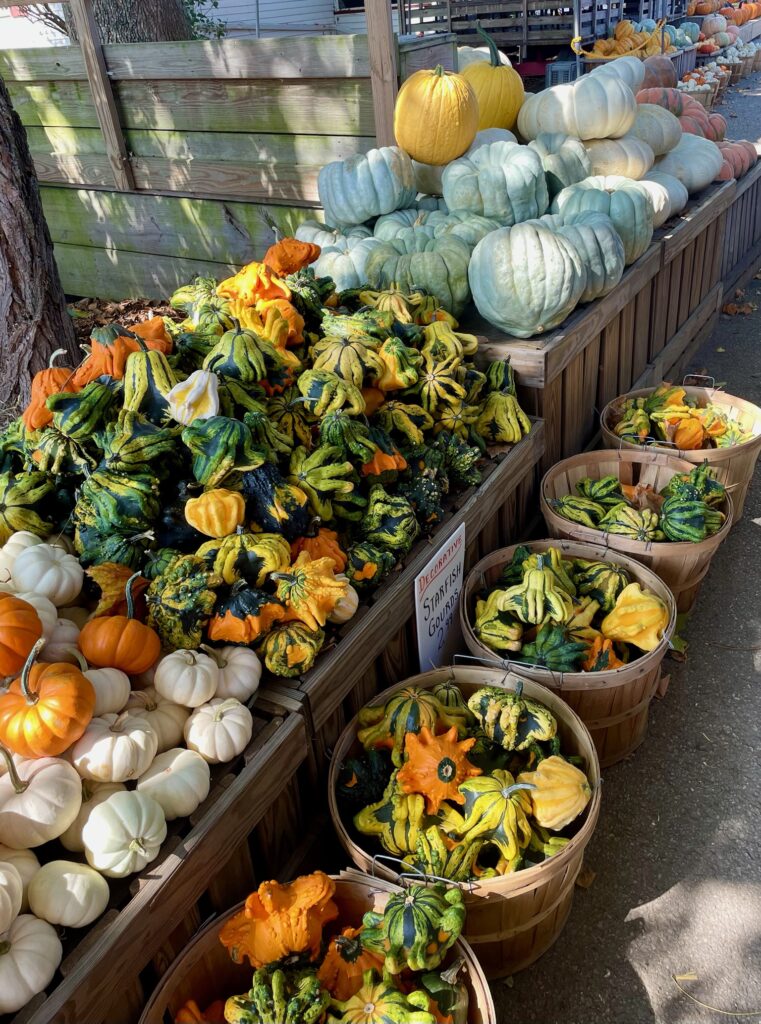
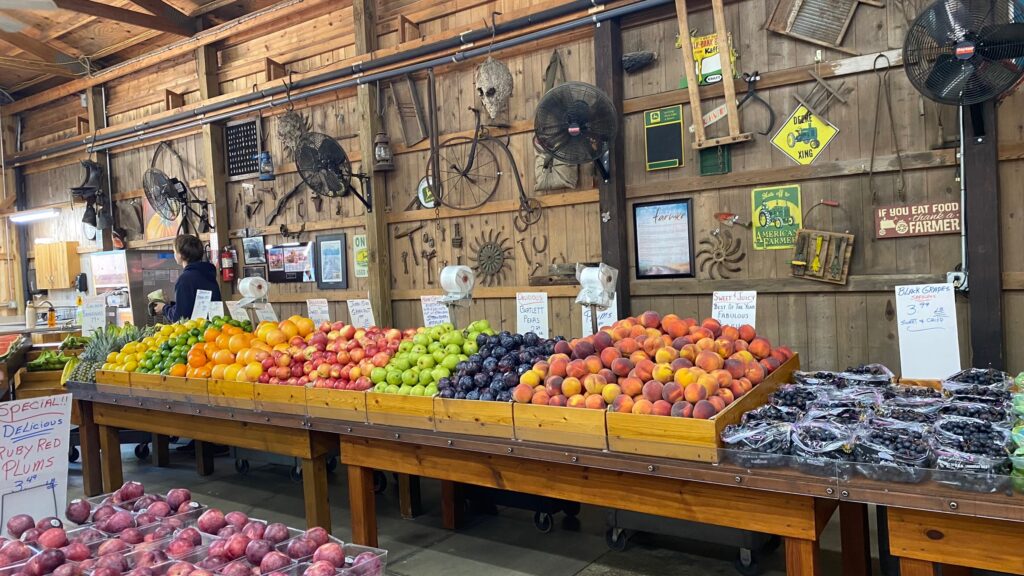
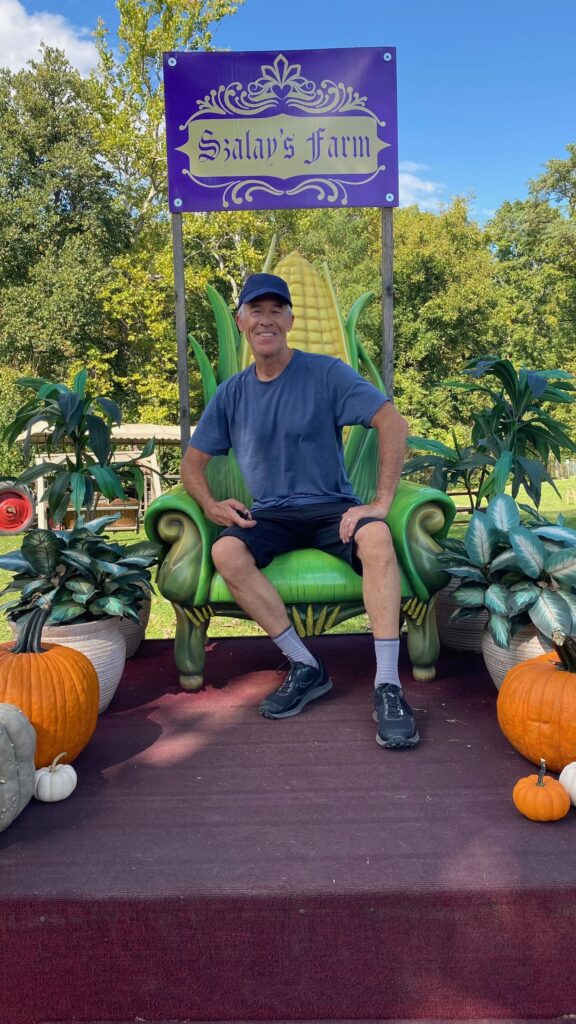
BRANDYWINE FALLS
Before reaching our Boondocker Welcome location for the evening, we took a short walk to see the 65-foot Brandywine Falls. The boardwalk trail offered spectacular views of this natural wonder, where water cascades over layers of standstone and shale.
We never met our Boondocker Welcome host and had a quiet evening behind the house along with the owner’s abandoned cars. While one of the least scenic homes we’ve stayed at, it was very conveniently located.





This packed day showed us a side of Cleveland and the surrounding area that many travelers miss – one rich in history as well as natural and man-made beauty. Each stop offered its own special charm and story.

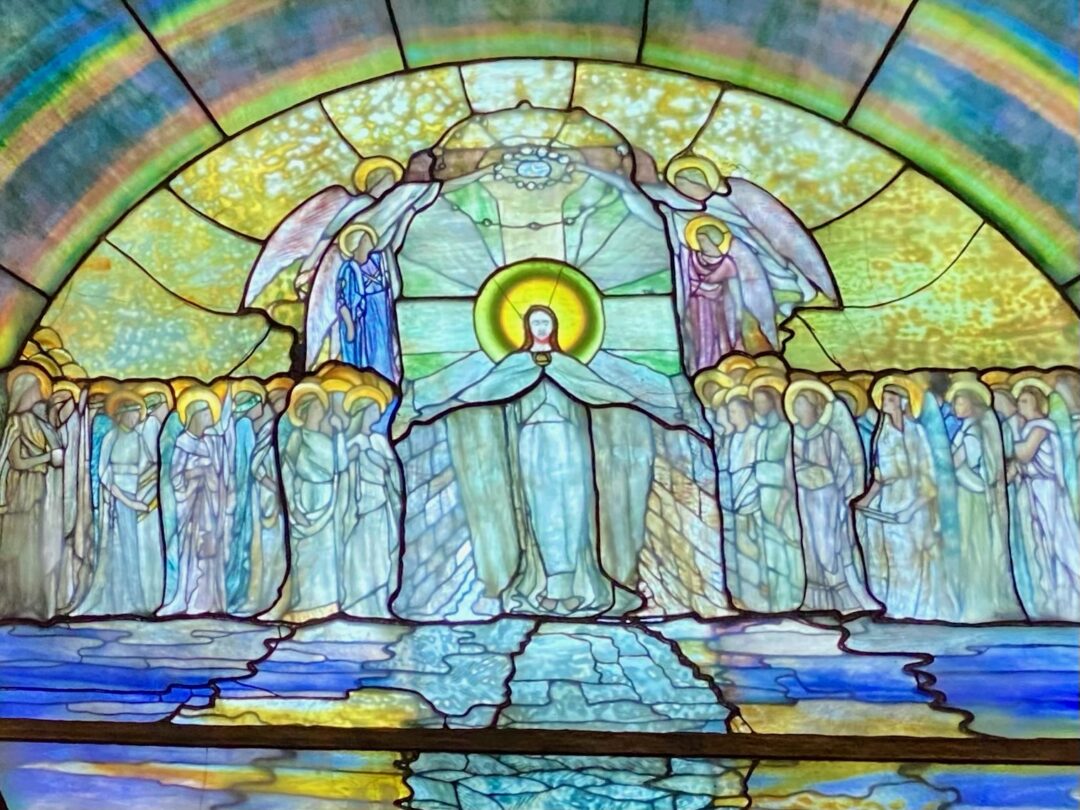
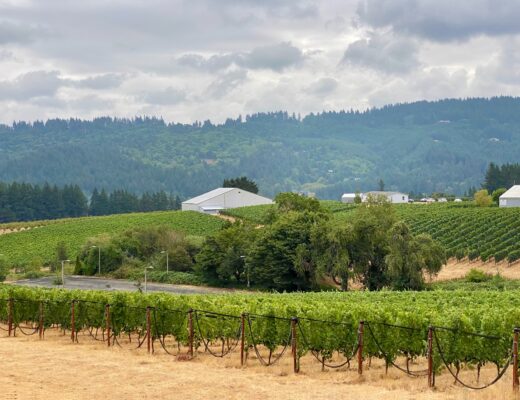


















 Did you know that the oldest and largest aviati
Did you know that the oldest and largest aviati



